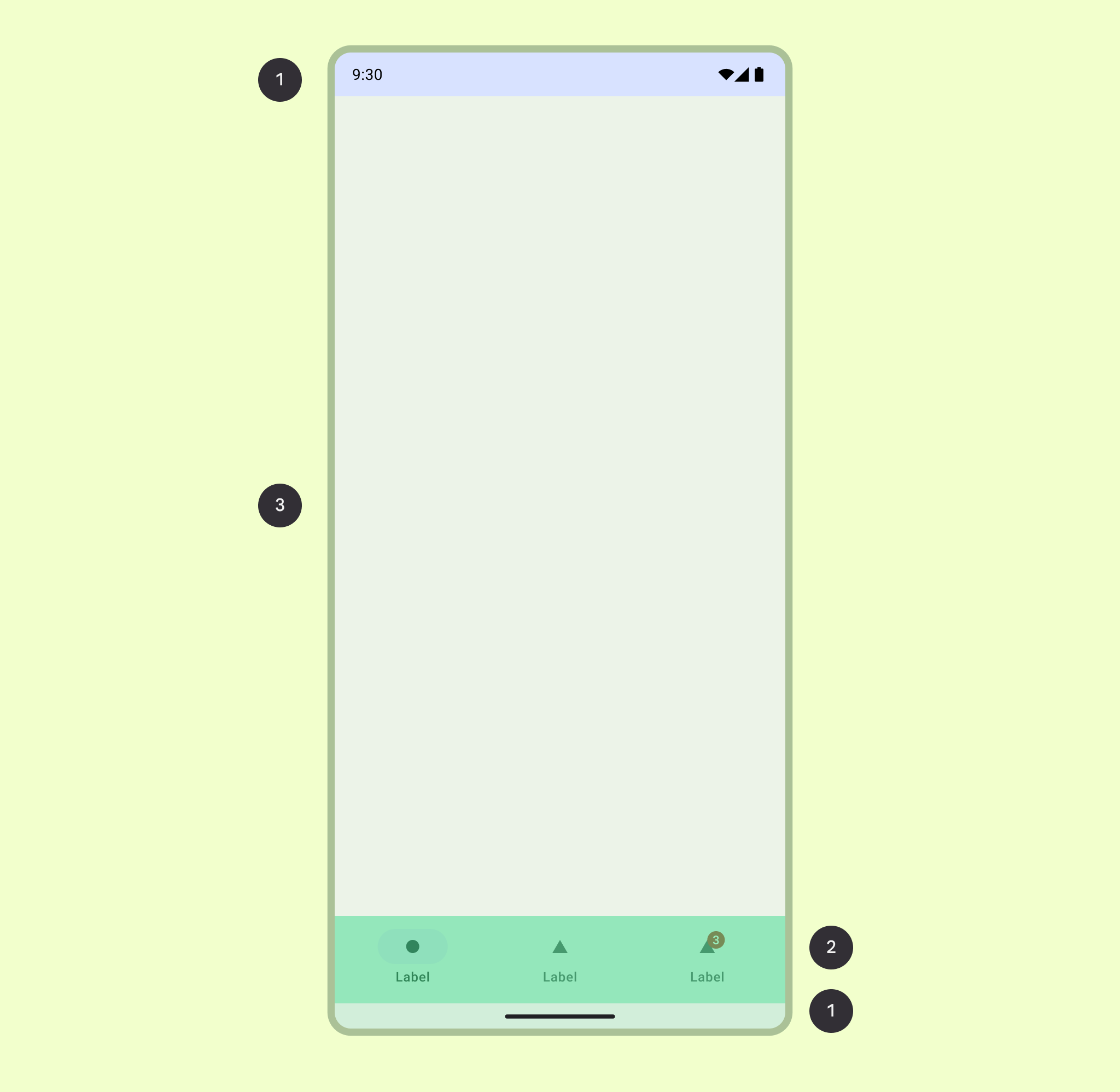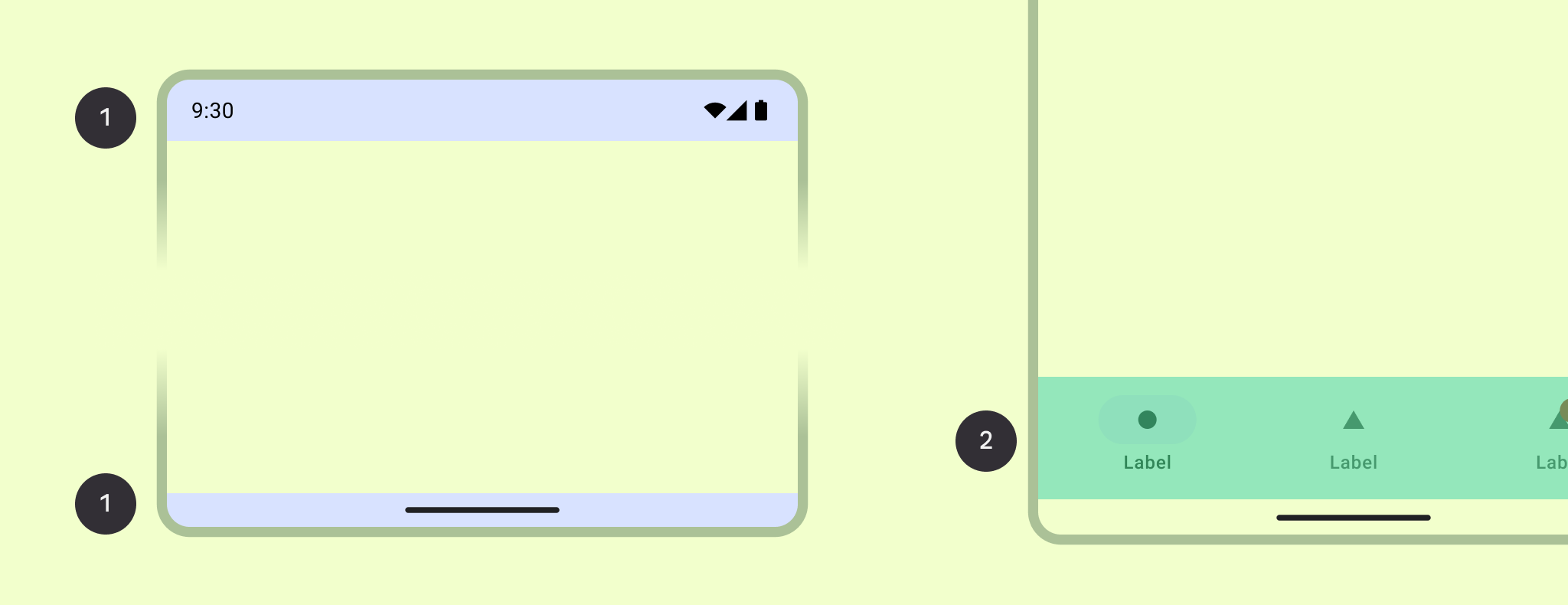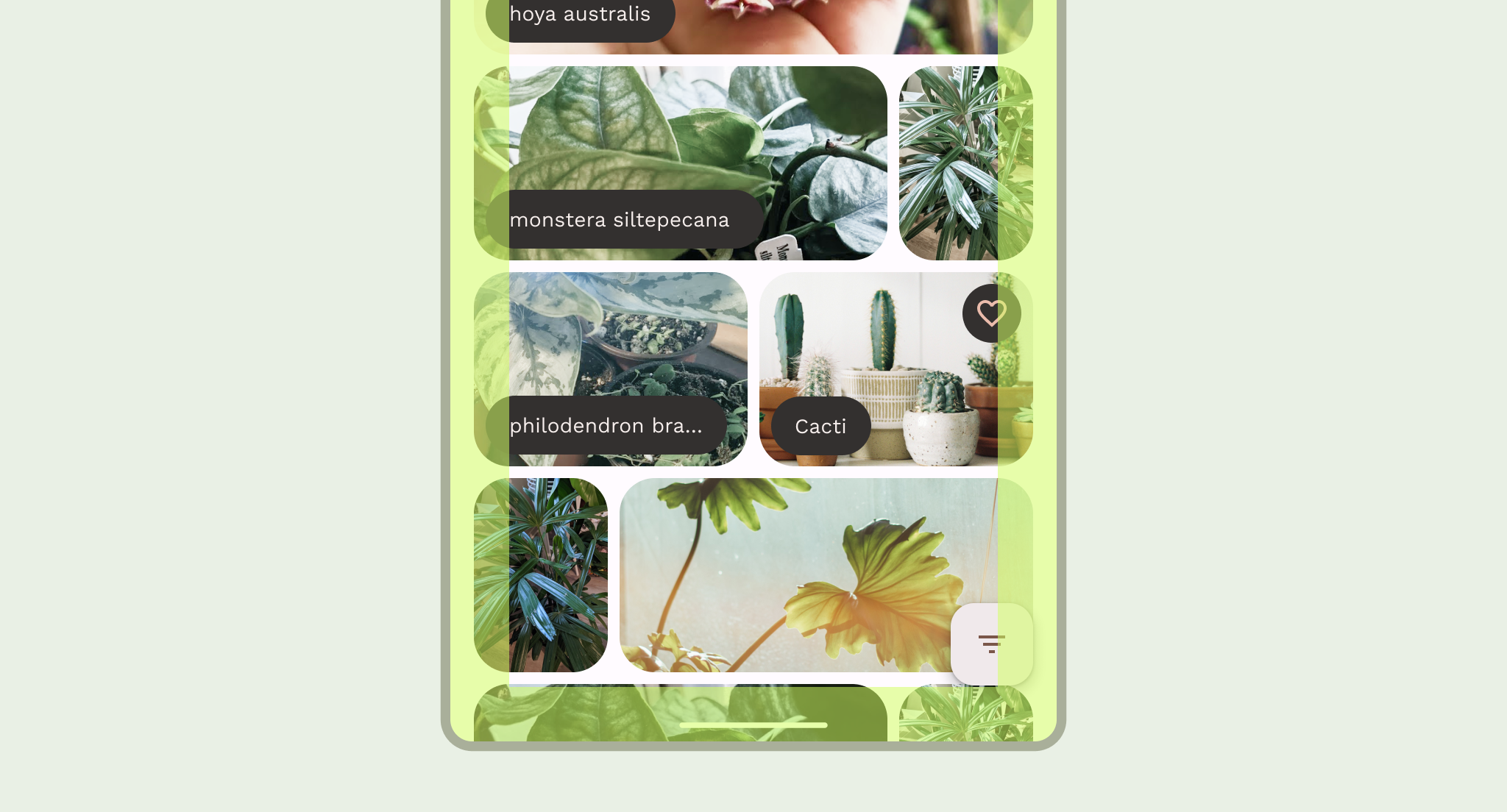Most Android apps consist of regions referred to as the system bars, the navigation area, and the body.

System bars
The status bar and navigation bar–collectively known as the system bars–display important information such as battery level, the time, and notification alerts, and provide direct device interaction from anywhere. Read more about system bars.

Navigation region
Navigation represents the different affordances that allow a user to navigate within your app, access important actions, or across the Android platform.
Body region
The body region holds the screen content. Body content is composed of additional groupings and layout parameters. It must continue under navigation and system bar regions. Declare [`WindowCompat.setDecorFitsSystemWindows(window, false)`][5] for edge-to-edge insets.

To determine the appropriate composition and navigation patterns for your layout, seek to understand how users interact with your content, and how they navigate your app's information architecture. This understanding can guide your design toward being more user-focused by creating UI that users can act on.
